Cycling Nutrition: Your Ultimate Guide
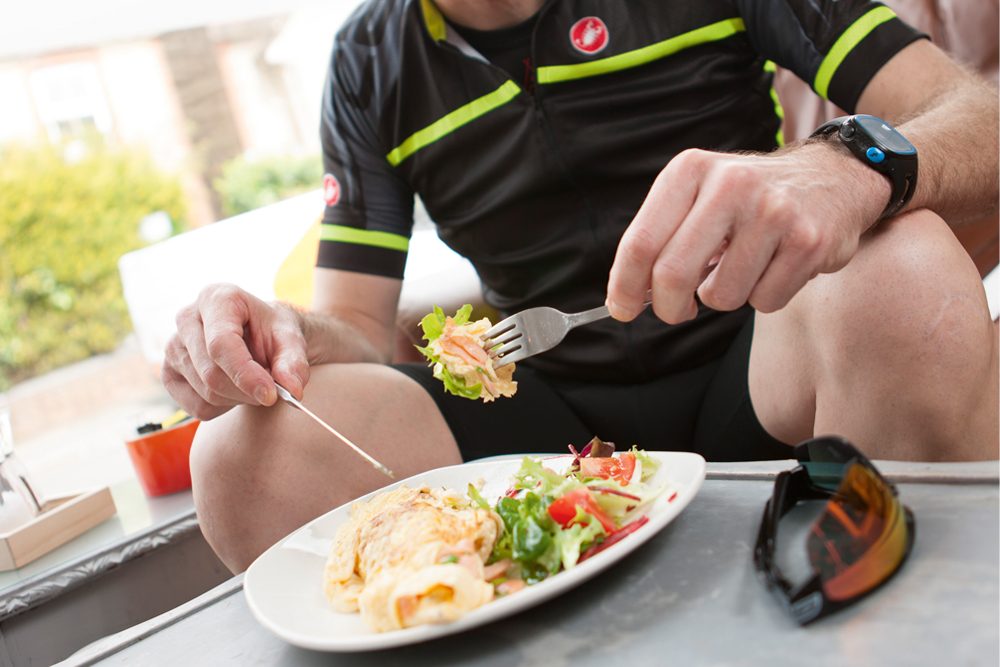
Supplement your training with the correct cycling nutrition or bike nutrition, and you will reap the rewards on race day
Most cyclists participating in the race will experience hellish training during training, adding 10 watts to their FTP or 200 watts to their sprints. Many of them will be happy to spend huge sums of money on the best road bikes, deep-section wheels, dynamometers and tights. But few of them pay due attention to their diet and often follow lazy or outdated advice passed down from previous generations. But don’t worry, we are here to provide you with a short and comprehensive guide on what you should eat while riding and cycling to help you adapt to training and perform at your best on race day.
It is important to note that riding a bike to become faster in a race and riding a bike to lose weight are two things. The same is true for cycling nutrition. Although some of the recommendations in this article may be useful for those who want to lose weight, this article is mainly aimed at racers.
Fuelling
Racing road bikes are not a simple all-purpose sport, so you should not plan your bike nutrition like this. The most common events are road races, standard (or crit) and cross-country races, although the emergence of gravel races is a welcome addition. The requirements of gravel races are similar to those of road races of similar duration, so we classify the two under the banner of road races, which are also critical strikes in cross-country races.
Although you may want to use any new suggestions in your next game, you really shouldn’t. All athletes are different. Although general guidelines can be given, you never know how you will deal with new exercises. The best way is to plan your race day nutrition and try it out a few times in difficult group rides or local chain gangs to see how you react. This way, if anything might not go as planned, you can make changes before the game, and you won’t end up doing Dumoulin.
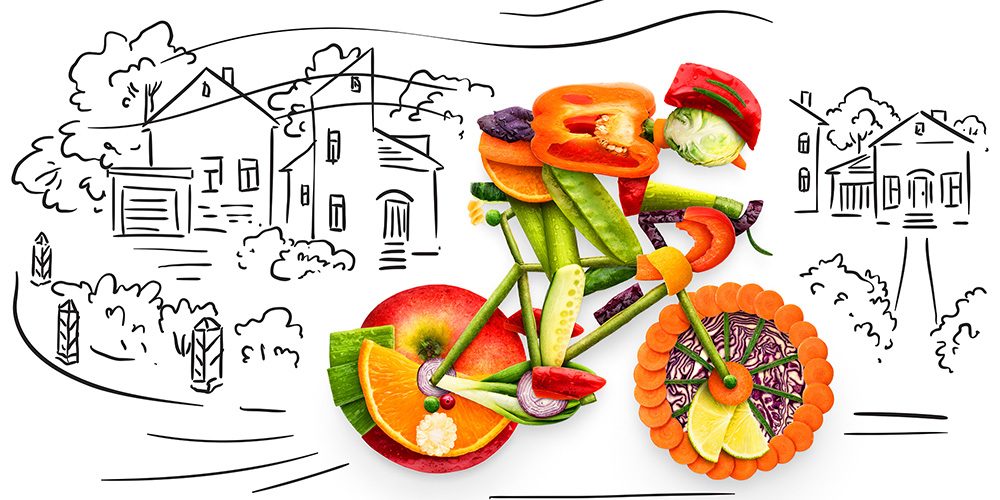
Bike nutrition for road racing
The body uses two main macronutrients to produce energy during exercise: carbohydrates and fats. Carbohydrates are sugars, starches, and fiber found in fruits, grains, and vegetables. Once they are ingested, we can use them for energy, maintain blood sugar levels, or replenish liver and muscle glycogen stores. Fat is found in some plants and most animals, and is what we store in large quantities. Even the thinnest rider can weigh several kilograms. It also has much higher calories than carbohydrates. One gram of fat contains nine calories, while one gram of carbohydrate has only four calories.
We know this will definitely annoy some fans of low-carb, high-fat, ketogenic diets, but we must be clear from the beginning: when it comes to road racing performance, carbohydrates are king. In general, proper carbohydrate supplementation is the biggest single factor in improving bicycle performance. The ketogenic diet does have a place in low-intensity, ultra-endurance events, where fat can be your main fuel source, but in WorldTour and amateur road races, carbohydrates are by far the most important fuel source. Looking forward to some possible comments; yes, Chris Froome once had a low-carb breakfast, but he did not win the tour because of ketosis. As far as we know, none of the athletes in the Tour de France, the Tour de France, the Tour de France, the World Championships or the Olympic road race has won a championship after receiving a ketogenic diet.
So why are carbohydrates important?
When you do high-intensity exercise, you will mainly use carbohydrates in the liver, blood, and muscles. Fatigue during long-distance road races is related to low blood sugar, liver glycogen and muscle glycogen levels. It is for this reason that advice on carbohydrate load will be heard a few days before the race. If your game time exceeds 90 minutes, you should consume a lot of carbohydrates the day before the game. You need 6 to 12 grams of carbohydrates per kilogram of body weight, depending on the length of the game.
On the day of the game, carbohydrates once again became the key to performance. Some people worry that eating carbohydrates one hour before exercise can cause reactive hypoglycemia (hypoglycemia). However, there seems to be little evidence that this has any negative impact on performance, so we recommend eating 20-30 grams of carbohydrates approximately 15 minutes before the start of the game. The amount you eat during the game depends on the length of the game, but the following recommendations should be followed:
• 1-2 hours of competition: 30 grams per hour
• 2-3 hours: 60 grams per hour
• 3 hours or more: 90 grams per hour
The limiting factor in how much carbohydrates you can use during a game is how fast your intestines can absorb it, and this is where multiple transporters might come in handy. Glucose and fructose are the two most common sugars in circulating nutritional products. They are absorbed by different transporters, so we often see a combination of the two. The absorption rate of glucose is 60 grams per hour, and that of fructose is about 30 grams per hour. So, if your goal is to consume 90 grams of carbohydrates per hour, you should try to get 60 grams from glucose and 30 grams from fructose. However, it is important to note that glucose is absorbed faster than fructose, so if your goal is to eat 60 grams per hour, you should make sure it is all glucose or maltodextrin.
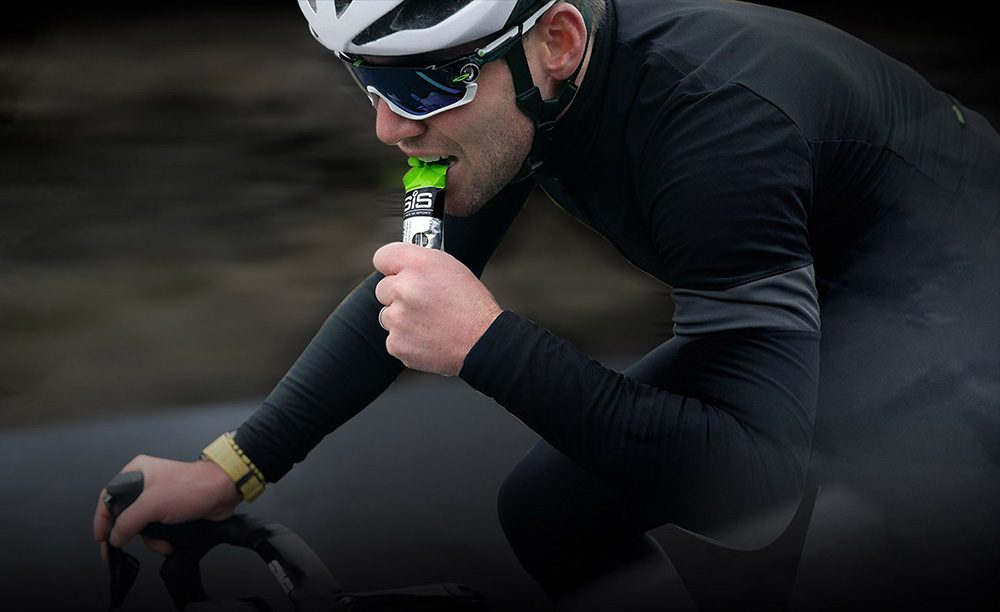
Crit
In longer road races, the main benefit of carbohydrate intake is metabolism, such as maintaining the highest level of muscle glycogen. Although we don’t need to worry about this during a crit, consuming carbohydrates is still good, even if we don’t have time to fully absorb what we eat. The benefit is not metabolism, but the effect on the central nervous system. Although it is not fully understood, we know that there are receptors in the mouth that can sense carbohydrates, which may be related to the improvement of performance. Therefore, in your next crit, don’t be afraid to take the gel in the last 15 minutes, or drink less and often carbohydrate beverages.
Train
The purpose of competition and training is completely different, you should treat your nutrition like this. Your training goals may also be very different, whether it’s improving your five-minute strength, FTP, sprinting, or long-term riding ability.
If your training purpose is to ride hard, then you need carbohydrates to provide energy for it. When you do high-intensity training, you almost only use carbohydrates, so if your carbohydrate content is low, you will not be able to achieve the amount you want. Treat these high-intensity training as you would a competition; if you are going out for five hours and working hard, eat more carbohydrates.
However, sometimes you may not want to consume carbohydrates while riding, or you may even want to run out of glycogen when you start riding. The benefits of these low-carb rides are twofold. First, they can teach your body to use fat as a fuel source more efficiently, which means you will learn to “save” muscle glycogen when needed during a
game, such as high-intensity training that can win a game. Second, it can help you better adapt to exercise. One of our main ways to adapt to repetitive training is to increase the number of mitochondria in muscles, and completing training with low muscle glycogen levels has been shown to increase the speed at which we create new mitochondria.
There are several ways to train with low carbohydrates, including
1. Do two classes a day, with the least refueling between classes
2. Eat low-carb food the night before the ride
3. No breakfast before cycling
4. Eat a normal breakfast, but avoid carbohydrates during the ride.
It is common for your power output to be lower than normal during low-carb training, but some of the loss can be recovered by using a carbohydrate mouthwash. Just drink a carbohydrate drink in your mouth for 10 seconds every 5 minutes and spit it out… watch out for other riders.
One of the big problems with low-carb riding is clumsiness. This happens when we consume most of the muscle glycogen and the sugar content in the liver and blood is getting lower and lower. This is the feeling of fatigue and hunger, and it is terrible. One way to avoid this is to carry some high-carbohydrate foods with you as a backup. If you are a few miles away from home and feel that hunger is coming, don’t be afraid to eat carbohydrates to help you get home-the negative effects of digging a hole in three days to recover will soon outweigh the benefits gained from the beginning Train low carbohydrates.
Another important caveat of low-carb training is that doing so often will undermine your ability to perform high-intensity training, which is essential for performing well in the game. There are several important enzymes in the muscles, which allow you to produce energy fast enough for high-intensity exercise. Long-term training without carbohydrates can reduce the number of these enzymes in the muscles. In view of this, we recommend that you distribute nutrition in the same way as the training cycle. You may wish to avoid carbohydrates on some lighter days, but on those difficult days, make sure to supplement your fuel appropriately.
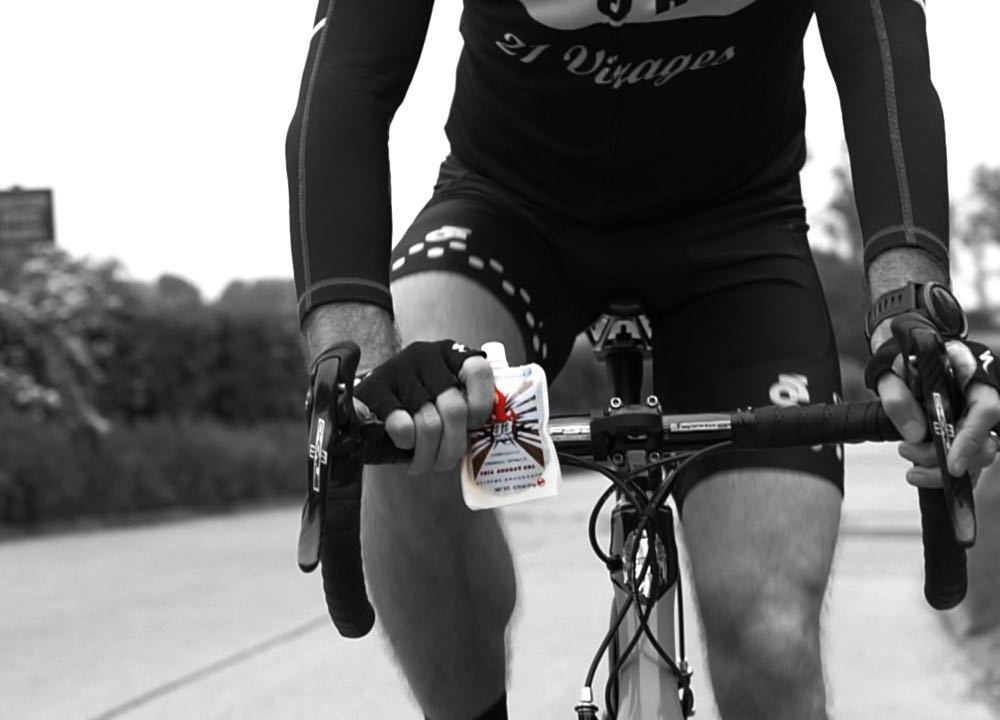
Hydration
During exercise, your body will produce more metabolic calories than usual, and the main way to lose excess calories is sweating. If you lose more than 3% of your body weight due to sweating (2.25 kg for a 75 kg rider), it is likely to have a significant adverse effect on your performance.
Before exercising, you should drink about 500 ml of fluid about four hours before you start. The next time you urinate, if the color is darker, you should drink the same amount again and continue to do so until the color of the urine becomes light or clear. Some people sweat so much during exercise that it may be difficult for them to replenish all the fluid they lose, and hydrating before exercise may be beneficial for them. Although there are potential benefits, it does increase your risk of having to stop to urinate during the game, so be careful.
If you take in more water than you lose through sweat, you risk hyponatremia; the sodium in the blood is diluted. Such symptoms include confusion, weakness, and fainting. In the most extreme cases, seizures and even death can occur.
The best way to determine how much fluid you should consume is to weigh yourself and record it before and after riding in various weather conditions. If you finish the ride and are a few kilos lighter than when you started, you will know that you should drink more water in the future. It’s best to try it until your weight at the end of the ride does not exceed 2 kg at the beginning.
Nutrition after riding
Many people think of protein first, but why? Protein or the amino acids that make up protein are part of all cells of the body (including skeletal muscle). The theory is that if you eat protein, it will turn into muscle, which is why many athletes drink protein shakes immediately after finishing their workouts. However, for most cyclists, this shouldn’t be a big problem. Although protein supplementation can help increase the rate of protein synthesis after weight training, there is little evidence that it has any beneficial effects on endurance performance. If you consume 3,000 to 4,000 calories a day to provide energy for your training, then you are likely to consume enough protein without using supplements.
Endurance athletes should be more concerned about supplementing carbohydrates after competition or hard training. If you have completed a hard ride and need to do the same ride again the next day, you should start replenishing glycogen reserves immediately after the ride.
Caffeine supplement
Caffeine can be said to be the most commonly used supplement in sports because it has the effect of enhancing performance. Don’t try to think that a higher dose is better, because you are not far from the truth. The main effect of caffeine is through the central nervous system, and you only need 200 mg to experience these effects. Higher doses are related to stomach cramps, gastrointestinal discomfort, and, as expected, performance decreases. Some people worry that regular caffeine intake before and during training rides may reduce its beneficial effects on race days. However, there is no evidence that habitual use will reduce its effectiveness on race days.
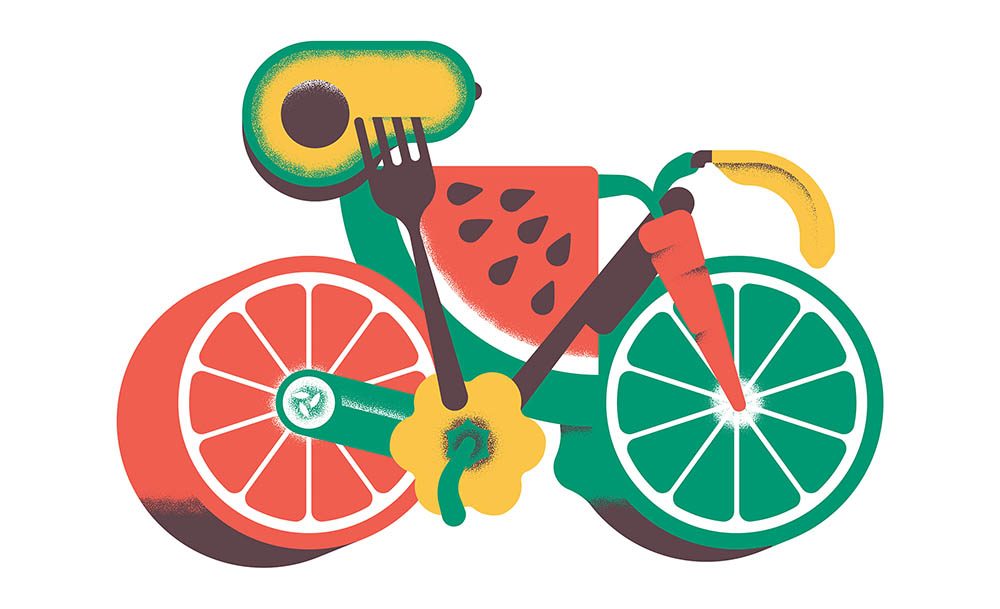
Supplement β-alanine
This supplement plays a role in a very high-intensity effort. During these efforts, which usually last 2 to 5 minutes, your muscles will become sour, which will reduce your ability to contract and your power output will also decrease. As a side note, this is not caused by lactic acid. Don’t listen to anyone telling you that muscle burning is lactic acid. In fact, this is the accumulation of hydrogen ions in other processes, and lactic acid helps our muscles to remove these ions.
Taking beta-alanine for a long time before the race day (think weeks and months) will increase the content of carnosine in your muscles, which will help counteract the increase in muscle acidity and help you perform high-intensity exercise for longer periods of time. Although there is no evidence that β-alanine can impair your performance in road races, its effects should be particularly useful in the crit of your repeated high-intensity efforts. Regardless of your weight, you should consume about 3.2 grams per day for the first 4 weeks and 1.6 grams per day thereafter.
In conclusion
While the most important cycling nutrition message is that you should fuel appropriately to your aims, this perhaps isn’t the single most important piece of advice. That is that you should experiment with and optimise your nutrition practices during your training sessions, so when it gets to race days, poor cycling nutrition isn’t going to undo the months of hard work you’ve put in on the bike.
If you are interested in our electric bikes or electric scooter, you can leave a message. If you have any query please feel free to contact us. We are looking forward to your arrival.
 Shuangye ebike
Shuangye ebike
